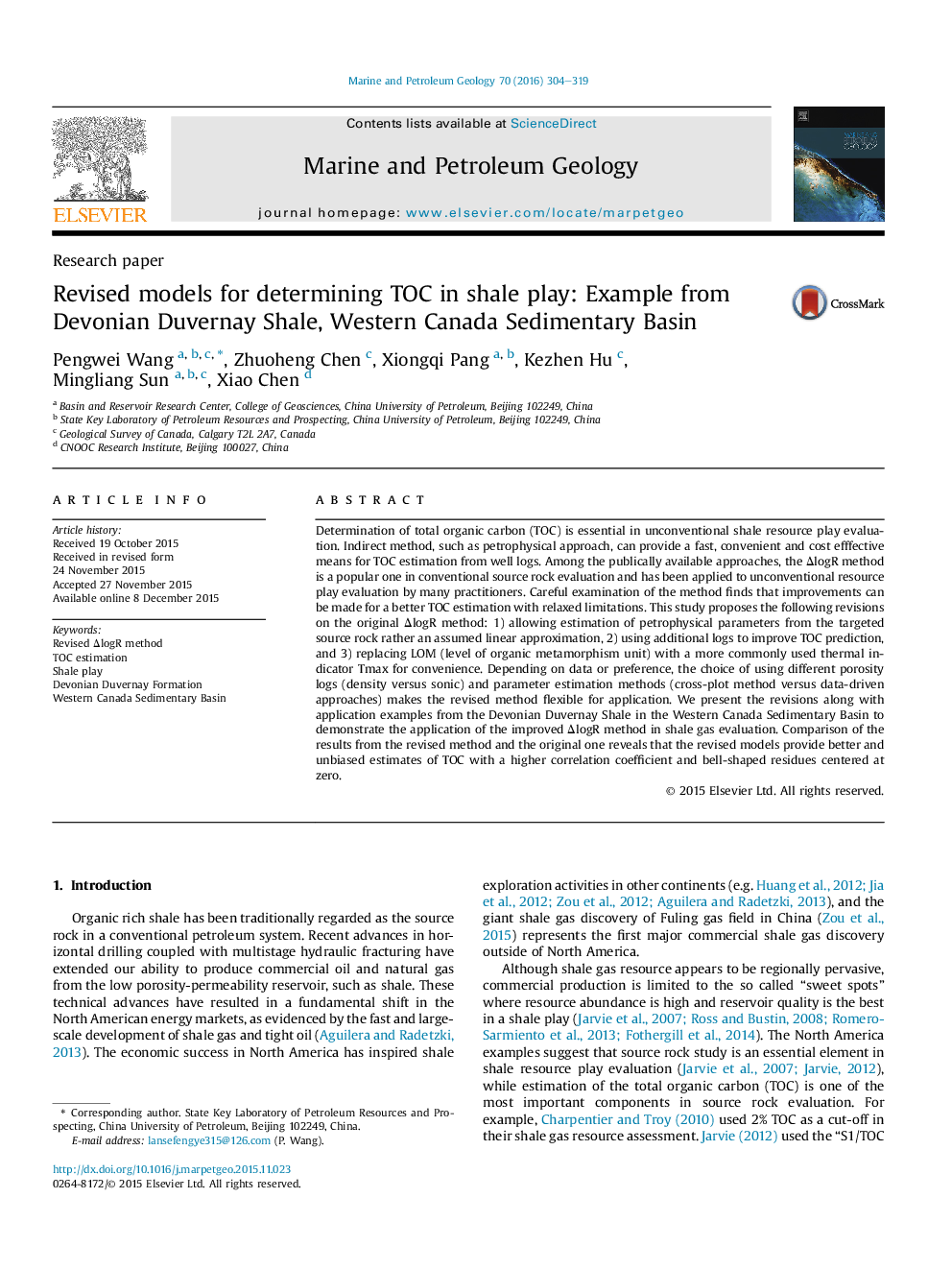| Article ID | Journal | Published Year | Pages | File Type |
|---|---|---|---|---|
| 4695459 | Marine and Petroleum Geology | 2016 | 16 Pages |
•Revised ΔlogR models are proposed to determine TOC content in shale.•We Redefine ΔlogR with two optional approaches to estimate matrix parameters related to target shale.•GR was introduced as an optional term to the models.•The LOM was replaced with Tmax or Ro%.•The application example from Duvernay shale demonstrates the improved ΔlogR method in shale gas evaluation.
Determination of total organic carbon (TOC) is essential in unconventional shale resource play evaluation. Indirect method, such as petrophysical approach, can provide a fast, convenient and cost efffective means for TOC estimation from well logs. Among the publically available approaches, the ΔlogR method is a popular one in conventional source rock evaluation and has been applied to unconventional resource play evaluation by many practitioners. Careful examination of the method finds that improvements can be made for a better TOC estimation with relaxed limitations. This study proposes the following revisions on the original ΔlogR method: 1) allowing estimation of petrophysical parameters from the targeted source rock rather an assumed linear approximation, 2) using additional logs to improve TOC prediction, and 3) replacing LOM (level of organic metamorphism unit) with a more commonly used thermal indicator Tmax for convenience. Depending on data or preference, the choice of using different porosity logs (density versus sonic) and parameter estimation methods (cross-plot method versus data-driven approaches) makes the revised method flexible for application. We present the revisions along with application examples from the Devonian Duvernay Shale in the Western Canada Sedimentary Basin to demonstrate the application of the improved ΔlogR method in shale gas evaluation. Comparison of the results from the revised method and the original one reveals that the revised models provide better and unbiased estimates of TOC with a higher correlation coefficient and bell-shaped residues centered at zero.
